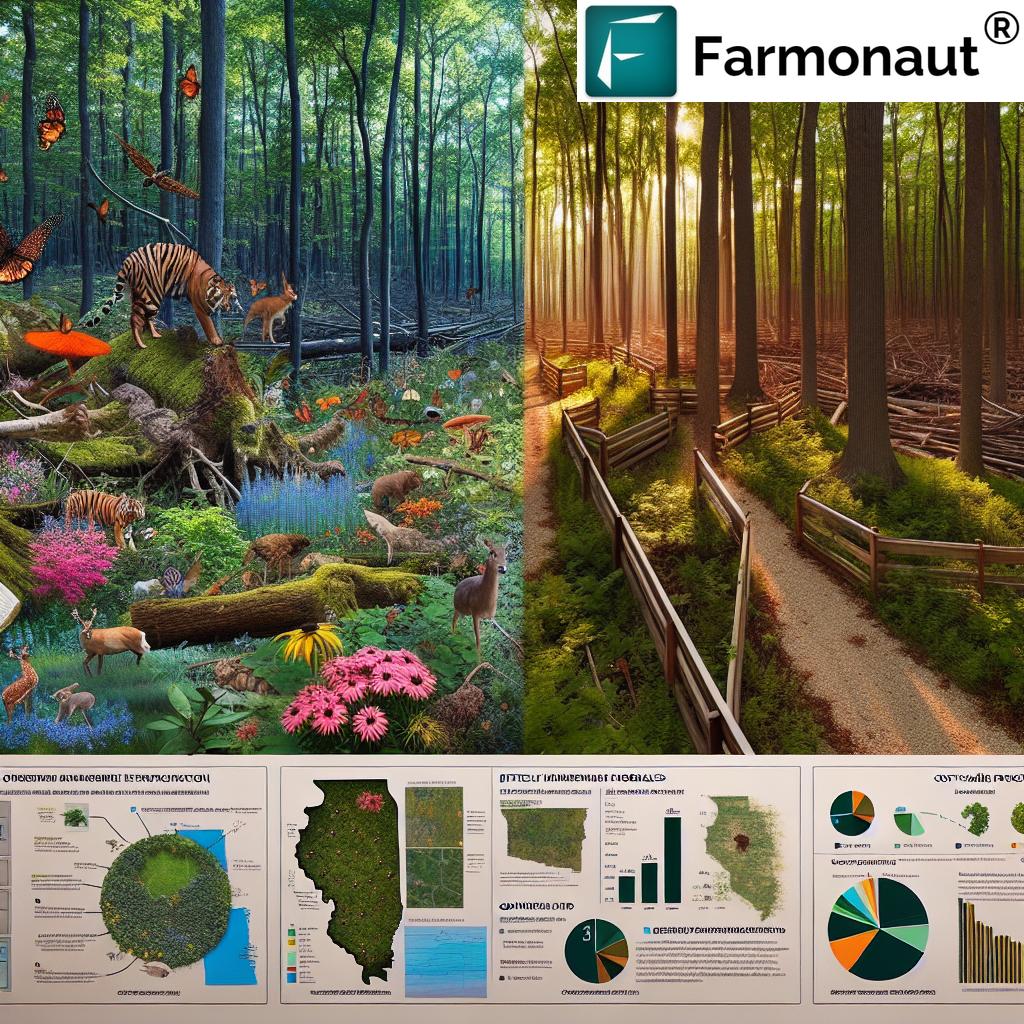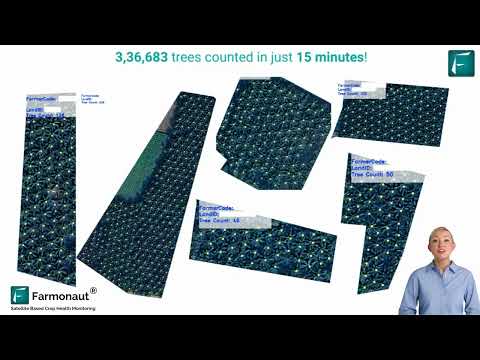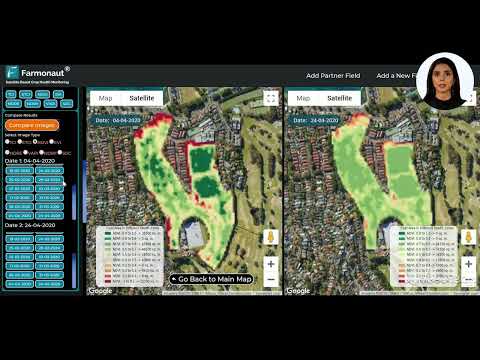Sustainable Forest Management in Illinois: Expert Guide to Woodland Conservation and GIS Mapping Tools
“Illinois forests cover approximately 4.9 million acres, or about 15% of the state’s total land area.”
Welcome to our comprehensive guide on sustainable forest management and woodland conservation in Illinois. As stewards of our natural heritage, we recognize the critical importance of preserving and managing our forest resources for future generations. In this expert guide, we’ll explore the multifaceted world of forestry, from cutting-edge GIS mapping tools to effective strategies for controlling invasive plant species. We’ll delve into the latest timber market trends, forest health monitoring techniques, and crucial aspects of forest land ownership.
Whether you’re a landowner, conservationist, or forestry professional, this resource offers invaluable insights into the intricate balance of preserving and utilizing our precious woodland resources. Let’s embark on this journey to understand and implement sustainable forest management practices in the Prairie State.
The Importance of Sustainable Forest Management in Illinois
Sustainable forest management is the cornerstone of preserving Illinois’ rich woodland heritage. Our state’s forests play a vital role in maintaining biodiversity, protecting water resources, and mitigating climate change. By implementing responsible management practices, we ensure that our forests continue to provide these essential ecosystem services while also supporting economic activities such as timber production and recreational opportunities.
- Biodiversity conservation
- Carbon sequestration
- Soil and water protection
- Sustainable timber production
- Recreational and cultural value
To achieve these goals, we must employ a range of woodland conservation techniques that balance ecological needs with human use. This includes careful planning, regular monitoring, and adaptive management strategies that respond to changing environmental conditions and societal demands.

GIS Mapping Tools: Revolutionizing Forest Management
Geographic Information System (GIS) mapping tools have revolutionized the way we approach forest management. These powerful technologies allow us to collect, analyze, and visualize spatial data, providing unprecedented insights into forest health, structure, and dynamics. In Illinois, forestry professionals are increasingly relying on GIS to make informed decisions about resource allocation, conservation priorities, and land-use planning.
Some key applications of GIS in forestry include:
- Forest inventory and assessment
- Habitat mapping for endangered species
- Fire risk analysis and management
- Timber harvest planning
- Tracking invasive species spread
By leveraging these tools, we can create detailed maps of forest boundaries, monitor changes over time, and develop targeted management strategies for different woodland types across the state.
At Farmonaut, we recognize the power of satellite technology and GIS in revolutionizing land management practices. Our platform offers advanced satellite-based solutions that can be applied to forest monitoring and management. While our primary focus is on agricultural applications, the principles of remote sensing and data analysis can be invaluable for forestry professionals as well.
Explore Farmonaut’s satellite-based monitoring solutions
Invasive Plant Species Control: Protecting Illinois Woodlands
Invasive plant species pose a significant threat to the health and biodiversity of Illinois forests. These non-native plants can outcompete native species, alter ecosystem processes, and reduce habitat quality for wildlife. Effective control of invasive plants is crucial for maintaining the integrity of our woodlands.
Common invasive plant species in Illinois forests include:
- Garlic mustard (Alliaria petiolata)
- Bush honeysuckle (Lonicera spp.)
- Japanese stiltgrass (Microstegium vimineum)
- Multiflora rose (Rosa multiflora)
- Tree of heaven (Ailanthus altissima)
Control methods for invasive plants often involve a combination of mechanical removal, herbicide application, and biological control agents. It’s essential to tailor the approach to the specific species and site conditions to maximize effectiveness while minimizing environmental impact.
Farmonaut’s satellite-based vegetation monitoring capabilities can be adapted to track the spread of invasive species in forested areas. By analyzing changes in vegetation patterns over time, forest managers can identify potential invasive hotspots and prioritize control efforts.
Learn more about Farmonaut’s API for custom monitoring solutions
Timber Market Trends and Forest Health Monitoring
Understanding timber market trends is crucial for forest landowners and managers looking to balance economic returns with sustainable management practices. The Illinois timber market is influenced by various factors, including:
- Global demand for wood products
- Local and regional sawmill capacity
- Transportation costs
- Species composition of forests
- Environmental regulations
Staying informed about these trends helps landowners make informed decisions about when and how to harvest timber, ensuring long-term forest health and economic viability.
Forest health monitoring is equally important for maintaining productive and resilient woodlands. Regular assessments help identify potential threats such as:
- Insect infestations (e.g., emerald ash borer)
- Diseases (e.g., oak wilt)
- Climate change impacts
- Soil degradation
- Drought stress
By detecting these issues early, forest managers can implement targeted interventions to mitigate damage and promote recovery.
“Over 90% of Illinois’ forest land is privately owned, highlighting the importance of landowner education in conservation efforts.”

Forest Land Ownership: A Guide for Illinois Landowners
With the majority of Illinois forests in private hands, understanding the responsibilities and opportunities of forest land ownership is crucial. Here are some key considerations for forest landowners:
- Developing a forest management plan
- Understanding property tax incentives for managed forests
- Participating in conservation easement programs
- Balancing timber production with other forest values
- Engaging with professional foresters for guidance
Landowners play a vital role in preserving Illinois’ forest heritage, and their decisions can have far-reaching impacts on the state’s overall forest health and biodiversity.
While Farmonaut’s primary focus is on agricultural applications, our satellite-based monitoring tools can be valuable for forest landowners looking to track changes in their woodland properties over time. Our user-friendly platform allows for easy visualization of land use changes, vegetation health, and potential areas of concern.
Explore Farmonaut’s API Developer Docs for custom applications
Cost-Share Programs for Forest Management in Illinois
Illinois offers several cost-share programs to support landowners in implementing sustainable forest management practices. These programs can help offset the costs of activities such as:
- Tree planting and reforestation
- Invasive species control
- Forest stand improvement
- Wildlife habitat enhancement
- Erosion control measures
Two primary programs available to Illinois forest landowners are:
- Environmental Quality Incentives Program (EQIP): Administered by the Natural Resources Conservation Service (NRCS), EQIP provides financial and technical assistance to implement conservation practices on working lands, including forests.
- Illinois Forestry Development Act (FDA) Program: This state-level program offers property tax incentives and cost-share assistance for approved forest management activities.
Landowners interested in these programs should contact their local NRCS office or the Illinois Department of Natural Resources for more information on eligibility and application procedures.
Forest Disaster Risk Reduction and Management
As climate change increases the frequency and severity of natural disasters, forest disaster risk reduction becomes increasingly important. In Illinois, key risks to forests include:
- Severe storms and wind damage
- Drought and associated wildfire risk
- Flooding and soil erosion
- Ice storms and heavy snow loads
- Insect and disease outbreaks exacerbated by climate stress
To reduce these risks and enhance forest resilience, managers can implement strategies such as:
- Diversifying tree species and age classes
- Creating firebreaks and implementing prescribed burning
- Improving drainage systems to manage excess water
- Regular monitoring and early intervention for pest and disease issues
- Developing emergency response plans for rapid post-disaster recovery
Farmonaut’s satellite-based monitoring can play a crucial role in disaster risk reduction by providing real-time data on forest conditions. Our platform’s ability to track changes in vegetation health and soil moisture can help forest managers identify areas at risk and take proactive measures to mitigate potential damage.
Endangered Species Protection in Illinois Forests
Illinois forests are home to numerous endangered and threatened species, making their protection a critical component of sustainable forest management. Some key endangered species found in Illinois woodlands include:
- Indiana bat (Myotis sodalis)
- Eastern massasauga rattlesnake (Sistrurus catenatus)
- Rusty patched bumble bee (Bombus affinis)
- Eastern prairie fringed orchid (Platanthera leucophaea)
- Illinois cave amphipod (Gammarus acherondytes)
Protecting these species requires a multi-faceted approach:
- Habitat conservation and restoration
- Implementing best management practices during forestry operations
- Conducting species surveys and monitoring populations
- Educating landowners and the public about endangered species
- Collaborating with state and federal agencies on conservation efforts
By incorporating endangered species protection into forest management plans, we can ensure the long-term survival of these unique and valuable components of Illinois’ biodiversity.
Forest Types and Public Woodland Maps in Illinois
Illinois boasts a diverse array of forest types, each with its unique ecological characteristics and management needs. The major forest types in the state include:
- Oak-hickory forests
- Maple-beech forests
- Bottomland hardwood forests
- Pine plantations
- Mixed hardwood forests
Understanding the distribution and characteristics of these forest types is crucial for effective management. Public woodland maps are invaluable tools for forest managers, researchers, and the general public. These maps provide information on:
- Forest cover and distribution
- Ownership patterns (public vs. private lands)
- Protected areas and conservation zones
- Recreation opportunities
- Forest health and disturbance patterns
The Illinois Department of Natural Resources provides comprehensive woodland maps that can be accessed online or through their offices. These resources are essential for planning management activities, identifying conservation priorities, and understanding the broader landscape context of forest management decisions.
Forest Policy and Regulations in Illinois
Forest management in Illinois is governed by a complex framework of federal, state, and local regulations. Key policies and regulations that forest managers and landowners should be aware of include:
- Illinois Forestry Development Act
- Federal Endangered Species Act
- Clean Water Act (as it pertains to forestry operations)
- Illinois Recreational Use Statute
- Local zoning and land use regulations
These policies aim to balance conservation goals with sustainable use of forest resources. Staying informed about current regulations and any changes is crucial for compliance and effective forest management.
Farmonaut’s commitment to staying abreast of regulatory changes in the agricultural sector can be valuable for forest managers as well. While our focus is primarily on farming, many of the principles of sustainable land management and compliance apply across both agriculture and forestry.
Recreational Use and Timber Sales in Illinois Forests
Illinois forests provide valuable recreational opportunities for residents and visitors alike. Popular activities include:
- Hiking and nature observation
- Hunting and fishing
- Camping and picnicking
- Bird watching
- Mountain biking and horseback riding
Balancing recreational use with other forest management objectives is an important consideration for both public and private landowners. Developing clear policies for recreational access, maintaining trails, and educating users about responsible forest use are key components of successful recreational management.
Timber sales are another important aspect of forest management in Illinois. For many landowners, timber harvests provide a valuable source of income while also contributing to forest health through proper management. Key considerations for timber sales include:
- Developing a comprehensive forest management plan
- Working with a professional forester to mark trees for harvest
- Obtaining multiple bids from reputable loggers
- Ensuring compliance with all relevant regulations
- Implementing best management practices to protect soil and water resources
By carefully planning and executing timber sales, landowners can achieve both economic and ecological benefits from their forest resources.
Forestry Alerts and Emerging Issues
Staying informed about current forestry alerts and emerging issues is crucial for proactive forest management. In Illinois, forest managers should be aware of:
- Pest and disease outbreaks (e.g., emerald ash borer, oak wilt)
- Extreme weather events and their impacts on forests
- Changes in forest composition due to climate change
- New invasive species threats
- Updates to forest management best practices
The Illinois Department of Natural Resources and the USDA Forest Service provide regular updates and alerts on these issues. Subscribing to newsletters and participating in professional development opportunities can help forest managers stay current on the latest developments in forestry science and practice.
While Farmonaut’s primary focus is on agricultural monitoring, our satellite-based technology can be adapted to track large-scale changes in forest health and composition. This capability can be particularly valuable for detecting early signs of pest outbreaks or climate-related stress in forest ecosystems.
Comparison of Forest Management Techniques
| Management Technique | Primary Benefits | Environmental Impact | Cost-Effectiveness | Suitable Forest Types | Implementation Complexity |
|---|---|---|---|---|---|
| Selective Harvesting | Maintains forest structure, promotes regeneration | Low | High | Mixed hardwoods, oak-hickory | Medium |
| Prescribed Burning | Reduces fuel load, promotes fire-adapted species | Medium | Medium | Oak savannas, pine forests | High |
| Invasive Species Control | Preserves native biodiversity | Low to Medium | Medium | All forest types | High |
| Reforestation | Restores forest cover, carbon sequestration | Low | Medium | Degraded or cleared lands | Medium |
| Forest Thinning | Improves growth of remaining trees, reduces competition | Low | High | Overstocked stands, plantations | Medium |
| Wildlife Habitat Enhancement | Increases biodiversity, supports game species | Low | Medium | All forest types | Low to Medium |
Conclusion: The Future of Sustainable Forest Management in Illinois
As we look to the future, sustainable forest management in Illinois will continue to evolve in response to changing environmental conditions, societal needs, and technological advancements. Key areas of focus for the coming years include:
- Adapting forests to climate change impacts
- Enhancing the role of forests in carbon sequestration
- Expanding urban and community forestry initiatives
- Leveraging new technologies for more precise and efficient forest management
- Strengthening partnerships between private landowners, government agencies, and conservation organizations
By embracing these challenges and opportunities, we can ensure that Illinois’ forests continue to thrive, providing ecological, economic, and social benefits for generations to come.
At Farmonaut, we’re committed to supporting sustainable land management practices through innovative technology. While our primary focus is on agriculture, many of our satellite-based monitoring and analysis tools can be adapted to support forest management efforts. We encourage forest managers and landowners to explore how our platform might complement their existing management strategies.
FAQ: Sustainable Forest Management in Illinois
Q: What is sustainable forest management?
A: Sustainable forest management is the practice of managing forests to meet current societal needs while preserving their health, productivity, and biodiversity for future generations.
Q: How can I get involved in forest conservation in Illinois?
A: You can get involved by joining local conservation organizations, participating in volunteer events, or if you’re a landowner, by implementing sustainable management practices on your property.
Q: What are the main threats to Illinois forests?
A: The main threats include invasive species, climate change impacts, forest fragmentation, and improper management practices.
Q: How do GIS mapping tools benefit forest management?
A: GIS tools allow for precise mapping and analysis of forest resources, helping managers make informed decisions about conservation, harvesting, and other management activities.
Q: What financial incentives are available for forest landowners in Illinois?
A: Landowners may be eligible for property tax incentives through the Illinois Forestry Development Act and cost-share assistance through programs like EQIP.






